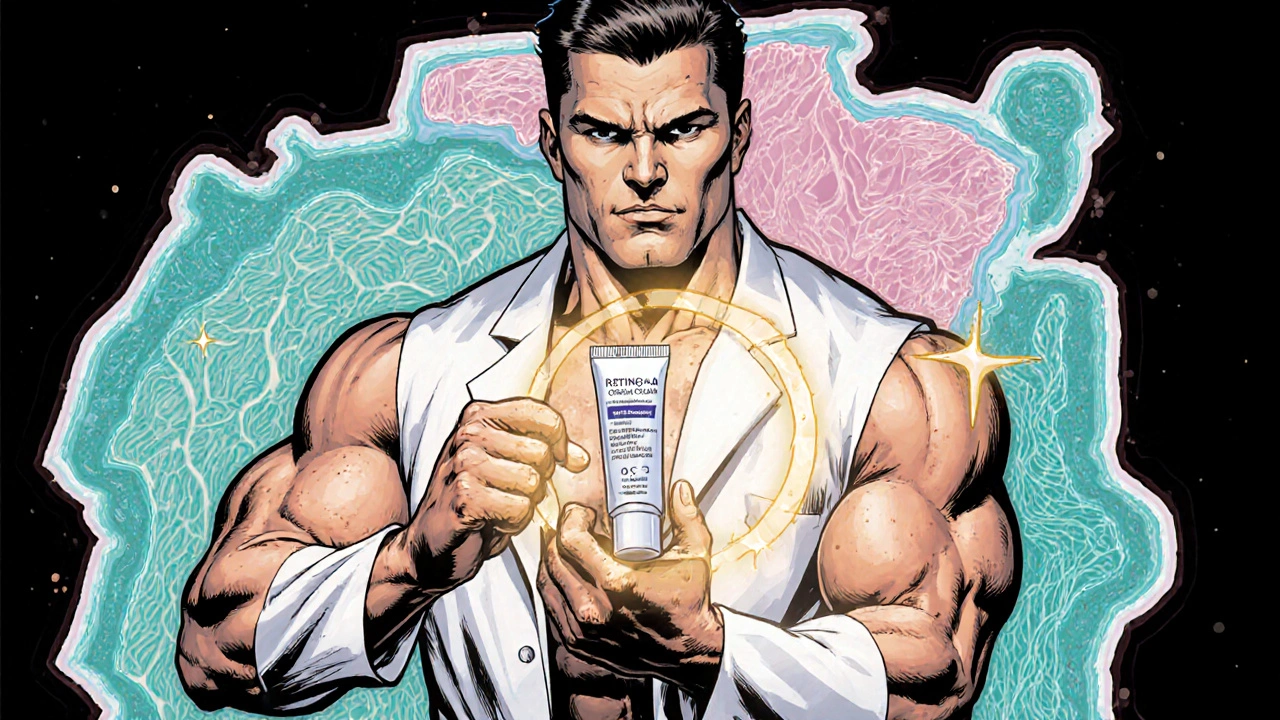Tretinoin – Definition, Uses, and How It Works
When working with tretinoin, a vitamin A‑derived retinoid applied topically or taken orally to treat acne, smooth fine lines, and manage certain skin disorders. Also known as Retin‑A, it regulates skin cell growth and reduces inflammation. tretinoin is a type of retinoid, which means it belongs to a broader class of compounds that affect skin cell turnover. By speeding up the shedding of dead skin cells, tretinoin helps keep pores clear and promotes the formation of fresh, healthy skin. This core action links directly to acne treatment, where clogged pores are the main problem.
Key Related Concepts
Another important player is retinoids, a family of vitamin A derivatives that include isotretinoin, adapalene, and retinaldehyde. Retinoids influence skin cell turnover, boost collagen production, and can make the skin more sensitive to sunlight. Because of that, photosensitivity, the increased risk of sunburn and skin irritation when using retinoids is a common side effect that users must manage with sunscreen and protective clothing. acne, a skin condition characterized by clogged pores, excess oil, and bacteria, often improves dramatically when tretinoin is part of the regimen. Dermatologists typically prescribe tretinoin based on acne severity, skin type, and the patient’s tolerance, creating a tailored plan that may combine antibiotics, benzoyl peroxide, or hormonal therapy. The relationship between dermatologist expertise and tretinoin use ensures safe dosing, monitoring for side effects, and adjustments as the skin responds.
Understanding the practical side of tretinoin helps you avoid pitfalls and get the most benefit. Start with a low concentration to let the skin adapt, apply a pea‑sized amount to clean, dry skin in the evening, and follow up with a broad‑spectrum sunscreen each morning. If irritation occurs, reduce frequency or buffer with a gentle moisturizer. Keep an eye on signs of excessive dryness, redness, or peeling—these often indicate you need to back off for a few days. For patients dealing with both acne and early signs of aging, tretinoin offers a dual benefit, tackling breakouts while smoothing fine lines. The collection below covers topics that intersect with tretinoin’s effects, such as nutrition for skin health, ways to manage burning sensations that can resemble retinoid irritation, and comparisons of other skin‑focused medications. Dive in to see how these insights can complement your tretinoin journey and support overall skin wellness.
Retino A Cream 0.05 (Tretinoin) vs Top Retinoid Alternatives - Detailed Comparison Guide
A detailed side‑by‑side comparison of Retino A Cream 0.05% (tretinoin) with top retinoid alternatives, covering potency, irritation, cost, and usage tips.
Read more
